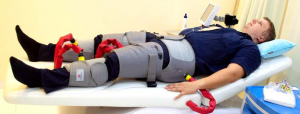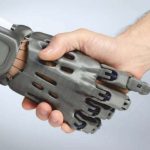The market for technologies and products in the treatment of coronary heart disease is forecast to grow from $12. 2 billion in 2014 to $22. 5 billion in 2021, (smithers) coronary heart disease (chd) or coronary artery disease occurs when a coronary artery clogs and narrows because of plague buildup.
Plaque is made of fat, cholesterol and other materials. This plaque builds up inside artery walls and can cause the arteries to narrow and stiffen, reducing the blood flow and vital oxygen to your heart muscle. The process oarthrosclerosis, the buildup of plaque in the wall of the arteries, happens over time.
Without enough blood supply, the heart is starved of the oxygen it needs to work properly, causing chest pain called angina. If the artery wall tears and plaque leaks into the bloodstream, it can cause a blood clot to form, blocking the blood vessel. If the blood flow to the heart muscle is stopped, or the heart does not get enough blood flow, a heart attack (injury to the heart muscle) can occur.
The market for technologies and products in the treatment of coronary heart disease is forecast to grow from $12. 2 billion in 2014 to $22. 5 billion in 2021, according to a new study from smithers.
External counter pulsation (ecp) is a non-invasive procedure believed to help stimulate the growth of new blood vessels in the heart and, in some cases, improves the ø ow of existing blood vessels. Often, ecp is used when physicians have exhausted other therapies. Ecp also may be used in addition to bypass surgery and angioplasty to enhance the benefits of these two procedures.
No preparation is necessary for ecp. In most cases, the procedure is done on an outpatient basis. It is suggested that patients wear clothes that are tight-fitting and elastic to prevent irritation from the cuffs and follow medication and exercise instructions as directed by their physician. An ecp treatment usually takes about one hour. Treatment is daily and may extend from five to twelve weeks or more. Patients are placed on a comfortable table and pneumatic stockings or cuffs are ötted to the calf and lower and upper thighs on each leg. These cuffs are hooked-up to a monitor which enables the physician to make adjustments to the pressure as necessary.
The cuffs are choreographed to inflate and deflate based on the results of an electrocardiogram (ekg), which measures heart rhythm. First, the calf cuffs inflate, followed by the lower thigh cuffs, ending with the upper thigh cuffs. The cuffs deflate as the heart starts another beat. Because ecp increases the pressure on the blood flowing through the aorta while the heart is at rest, the heart receives extra oxygen enriched blood. Dr. Annie varghese, ceo, advanced cardio vascular center, houston texas, is a cardiologist, trained to provide comprehensive care for the heart and cardiovascular system in patients. She was on a short visit to dubai and took some time out to speak with ayesha rashid of mediworldme on the beneö ts of the ecp therapy and how it can help prevent coronary artery diseases.
Why coronary artery disease is so prevalent these days and what can be done to prevent it?
coronary artery diseases is a number one killer in both men and women worldwide.
There are a lot of things which can be done to prevent coronary artery diseases so if we have to look at the ideology we have to look at the lining of the arteries and this is where the answer is with regard to the inø ammatory changes in the cholesterol such as the triglycerides and ldl (low-density lipoprotein) and the remnant particles which are very bad particles for the lining of the artery and when these things become oxidized, the oxidative stress takes over in the blood, causing triglycerides and ldl and the remnant particles to become toxic for the lining of the artery as well as the sub-lining, so these things enter the lining of the artery and they become deteriorated and start to attract white blood cells which later becomes macrophages. Then macrophages eat the bad cholesterol particles.
 years of research has shown that the reduction of ldl and triglycerides does decrease the morbidity and mortality in multiple clinical trials throughout the last thirty years. With regards to coronary artery diseases prevention we can definitely evaluate the patient by doing blood testing that looks at the lining of the arteries and then we can focus on the problem areas and then decreases the inø ammatory process in those areas.
years of research has shown that the reduction of ldl and triglycerides does decrease the morbidity and mortality in multiple clinical trials throughout the last thirty years. With regards to coronary artery diseases prevention we can definitely evaluate the patient by doing blood testing that looks at the lining of the arteries and then we can focus on the problem areas and then decreases the inø ammatory process in those areas.
You mentioned that 6. 2 million people in the usa are suffering from coronary artery diseases what is your suggestion in bringing down this number?
With regard to lifestyle modification, cad patients need to be taught about lowering cholesterol intake or fat intake which are the things which leads towards high cholesterol levels, lowering carbohydrates such as reö ned sugars, like cakes, cookies, pastas and potato, rice bread are all loved by the people, but are not good for our bodies and many people are very sensitive to these things and develop insulin resistance and subsequently diabetes. Diabetes leads to vascular plaque formation, so we can say that diabetes is equivalent to coronary artery diseases so if you can prevent diabetes you can prevent coronary artery diseases. Prevention is the key beyond the cholesterol and the sugars we talk about oxidative stress in the blood and we can check for it early in the patients who are coming for evaluation whether they have the family history of coronary artery diseases and they want to be checked early or if they have hypertension or diabetes. We can do blood test that we bring from the usa, called the pulse cardiac test, which is a simple blood test with nine different marks of information which are consistent with endothelium and correlated to the coronary arteries and cerebrovascular diseases so this test can predict the heart attack or stroke for the next ö ve years and the patients can understand it with regards to their symptoms and post that they can work towards lowering their risk with the treatment plans that we implement and in treatment, we focus on decreasing the inø ammatory changes in the blood and the endothelium level.
Over 1. 2 million patients per year undergo heart procedures, can ecp treatment cut down this number?
Ecp treatment has been shown to be beneö cial to improve the coronary flow, and multiple clinical trials show improvement in the st segment depression or low blood flow of the heart because ecp therapy is growing new coronary arteries so that is why it’s called ‘by pass without bypass’ because collateral flow is created in the areas that were not getting enough blood due blockages or small arteries or diffused diseases, can now be improved in the functioning of the heart muscle because blood øow has improved as well. Patients may come up with heart attack and need to be intervened on acutely but in the long term analysis, patients do beneö t significantly with regards to the coronary flow as well as improving systolic function with ecp therapy and we are actually evaluating the diastolic functions with the ecp patients.
Tell us about your ecp therapy?
ECP is well studied and has over 50 years of data. It requires patient to lay on a specialized bed that has cuffs attached to it which are placed on the legs in a sequential fashion as well as to the bottom area of the body, and the machine does the sequential compressions times to the cardiac cycle and squeezes the legs in the what we call a dyastallic phase of the cardiac cycle thereby helping the coronary artery flow to increase and improve blood øow to the heart. This is safe, recommended as an adjuvant therapy for the patients with cardiovascular diseases in medicare guidelines covering it for the chest pain not amenable to intervention.
How many hours of treatment do you recommend?
The length of the treatment is 35 days but its benefits can actually be seen after two weeks of treatment one hour a day on the bed for 35 days is the standard time.
Can you shed some light on your expansion plans in the uae?
we want to educate people in the united arab emirates regarding ecp therapy. The plan is to educate both doctors as well as patients with webinars and seminars, being available in a forum of clinical care in hospitals as well as in the setting of wellness care in outpatient clinics as well as in cardiac rehab centers. Merlin ecp centers will be especially interested in seeing patients for cardiac rehab as well as sports rehab as they have been pioneers in the field of ecp use in the research settings of their centers in sharjah as well as in dubai. I want the people of the uae and this entire region which sweeps from africa to europe to asia (as dubai is such a global hub and leader in medical care in this region) to be informed about excellent advances in medical science, one of which comes in the form of ecp therapy. I want to reach vision 2021 and to be hand in hand with sheikh mohammed’s dream for a better today and a brighter tomorrow for his people and all those of the united arab emirates.
















